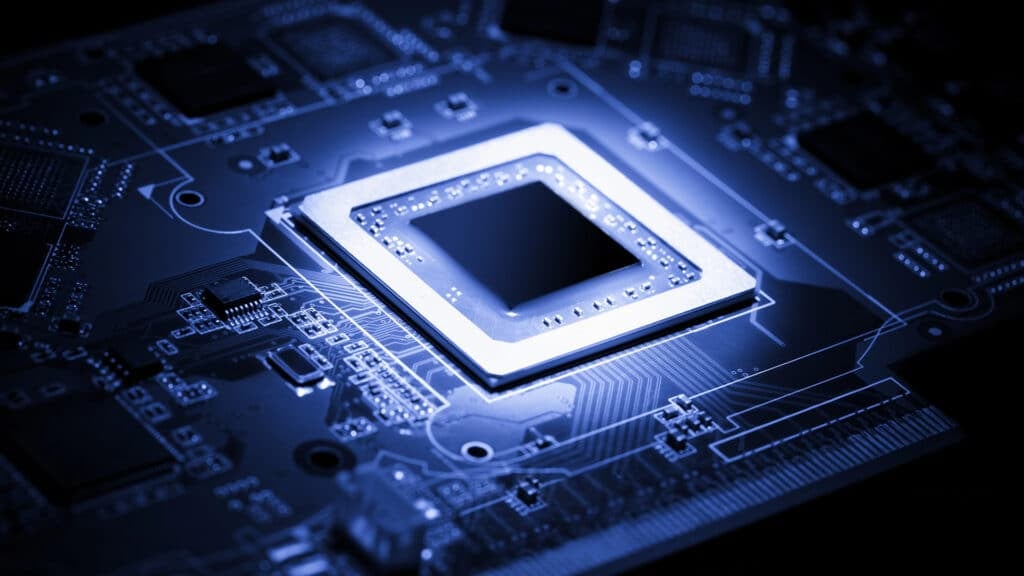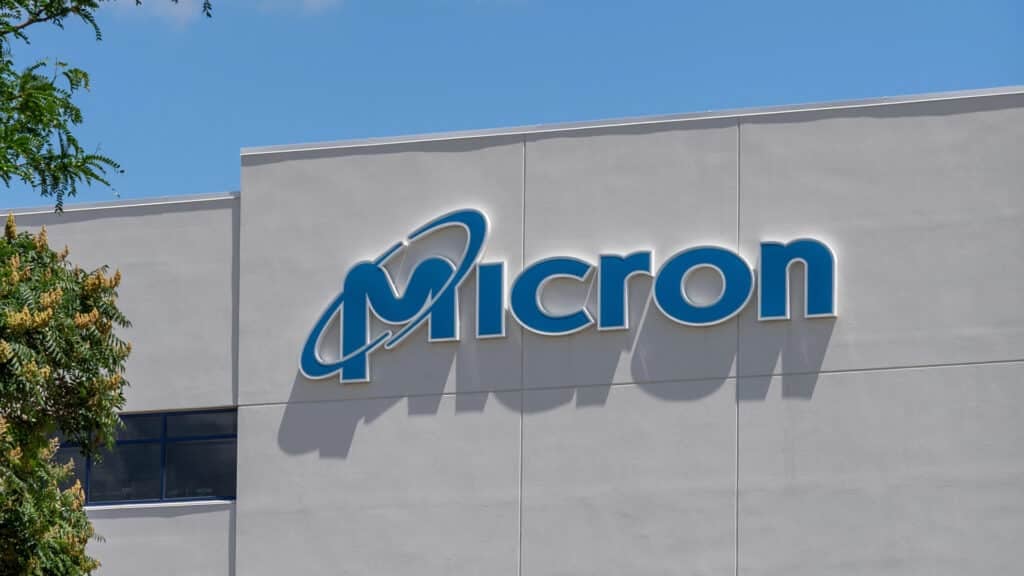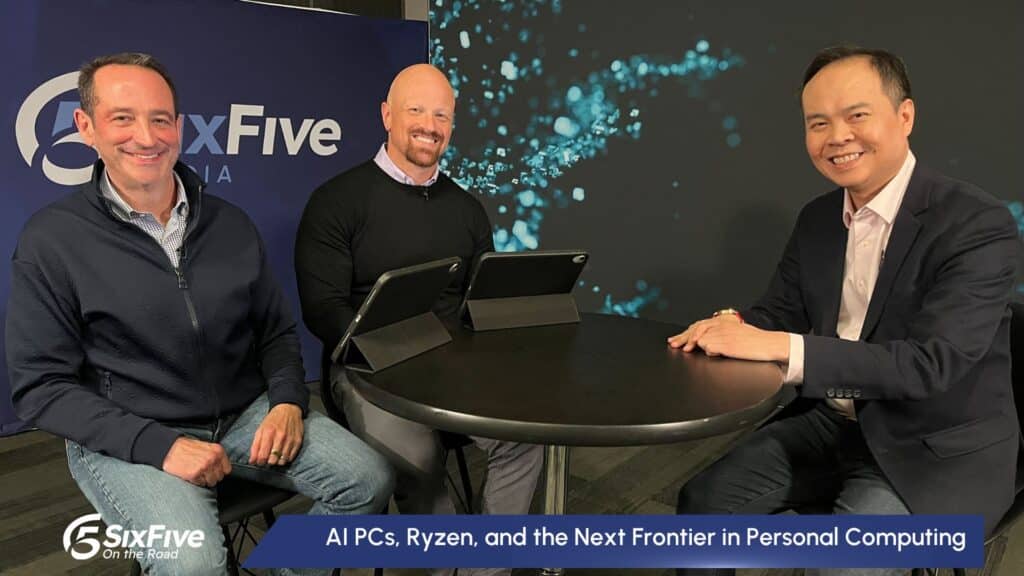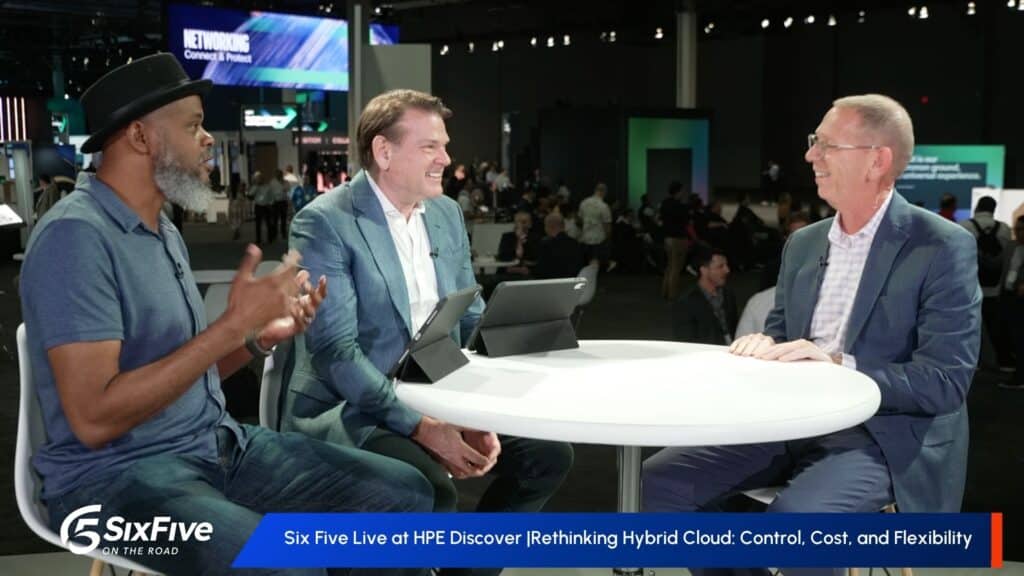In this episode of The 5G Factor, our series that focuses on all things 5G, the IoT, and the ecosystem implications, I’m joined by my colleague and fellow analyst, Olivier Blanchard, for a look at the top 5G developments and what’s going on that caught our eye.
Our conversation focused on:
T-Mobile is Offering Free Google Pixel 8 Products. Google Pixel 8, Pixel 8 Pro and Pixel Watch 2 are now available on the T-Mobile network as T-Mobile is taking orders online and in stores. We evaluate the market impact of T-Mobile promoting the performance gains that Google’s new devices can attain through T-Mobile’s 5G standalone four-carrier aggregation capabilities. Plus, we review some basic specs and the capabilities of the new Google Pixel products in comparison to alternative smartphones and smartwatches.
Intel Enters AI PC Race with NPU-powered Core Ultra Processor. Intel unveiled an array of technologies to bring AI everywhere and make it more accessible across all workloads, from client and edge to network and cloud, at its third annual Innovation event. Intel seeks to foment the new AI PC experience through its upcoming Intel Core Ultra processors (available December 14), code-named Meteor Lake, featuring Intel’s first integrated neural processing unit (NPU) for power-efficient AI acceleration and local inference on the PC. We examine the impact of the launch including use of the Intel 4 process technology in helping to deliver significant power-efficient performance improvements and bringing discrete-level graphics performance with onboard Intel Arc graphics.
5G Americas Industry Analyst Forum. 5G Americas recently hosted its Industry Analyst Forum in Dallas. The event is an opportunity to meet with its 17 member companies to discuss relevant current and upcoming technical advancements as well as participate in a variety of small roundtables discussions with member company subject matter experts. We look at key takeaways including how mobile devices have become integral to all society rendering spectrum as the new oil, identifying the enterprise vertical use cases that are generating revenue today, and new insights on non-terrestrial network (NTN) technology and capabilities.
Watch The 5G Factor show here:
Or listen to the full audio here:
If you’ve not yet subscribed to The 5G Factor, hit the ‘subscribe’ button while you’re there and you won’t miss an episode.
Disclosure: The Futurum Group is a research and advisory firm that engages or has engaged in research, analysis, and advisory services with many technology companies, including those mentioned in this article. The author does not hold any equity positions with any company mentioned in this article.
Analysis and opinions expressed herein are specific to the analyst individually and data and other information that might have been provided for validation, not those of The Futurum Group as a whole.
Transcript:
Ron Westfall: Hello and welcome everyone to The 5G Factor. I’m Ron Westfall, Research Director here at the Futurum Group, and I’m joined here today by my distinguished colleague, Olivier Blanchard, our research director focused on key areas such as devices and PCs. And today, we’re honing in on the major 5G ecosystem developments that have caught our eye most recently. And Olivier, welcome back to The 5G Factor, and many thanks for joining us today. How have you been bearing up between episodes?
Olivier Blanchard: It’s been good. I was happy to be able to take a break and work on other things, but it’s good to be back. I’m refreshed, I’m ready to go.
Ron Westfall: All right, perfect. Yeah, that’s what I think everybody appreciates. And so, with that high note, let’s dive right in. The first topic that we are addressing is that T-Mobile is now offering free Google Pixel 8 products on its network, specifically Google Pixel 8, Pixel 8 Pro and Pixel Watch 2 are now available, and T-Mobile kicked off pre-orders online and in stores with availability starting on October 12th. Now T-Mobile’s promoting Google’s new devices where it’s emphasizing that only T-Mobile customers can get faster speeds on the new Pixel smartphones due to T-Mobile’s 5G standalone four carrier aggregation network also paired naturally with value packed plans. And so, right now, new and existing customers, including businesses can score the Pixel 8 free or take advantage of a number of other alternative options. And so, Olivier, what impresses you most about the new Google Pixel 8 products?
Olivier Blanchard: Well, I don’t know if I’m the only analyst at Futurum who is the Pixel guy, but I’m the Pixel guy. I’ve been using Pixel products since the first one. I had the Excel, I have a Pixel Book, even one of the Chromebooks that Pixel made a couple of years ago that still works, still a fine device. I’ve always been impressed with the Pixel and especially with the photos that it can take. It’s really good on camera. Better, I dare say, than more premium priced iPhones, even. And it’s okay if you disagree, it’s fine. We can have arguments about this, but it’s been really good. I’m excited mostly about the photographic features of the new Pixel 8. I have the 6 now, so I’m wondering if I should upgrade.
The one thing that I’ve been curious about is the specs look really good this year and I haven’t had a chance to put my hands on the 8 or the 8 Pro and play with them. But the one thing that I’m a little iffy on or curious about is the modem. I would’ve liked to see a Qualcomm modem in there just because they’re so good. I think they’re using a Samsung modem. I’m wondering if there are affinities there with T-Mobile network that don’t necessarily exist or aren’t as fluid with other networks. It’s a question mark. It’s not a rhetorical question. I’m actually curious about that. I’ve noticed for myself that the Pixel 6 that I’ve been using for the last couple of years has been a bit slow with Verizon, so it’ll be interesting to do a comparison and see how T-Mobile fares with the Pixel 8 and Pixel 8 Pro.
Ron Westfall: Yeah. No, I think those are outstanding observations. As we know, when it comes to 5G performance, it can vary from network to network. And from my view, I think T-Mobile has established some competitive advantage and having the only nationwide 5G standalone network that is in production today, and perhaps some of the variances 5G 4G handoff, et cetera. So there’s all these variables in play that I think are important in understanding why does our smartphone or device perform the way it does on a particular network, and how can we best compare them in an apples to apple sense? In many ways, apples to applesauce is about the best that can be done, and we’ll definitely follow up on this. As we know, all the major US operators definitely look at third party tests of that confirm the performance parameters of their network and so forth i.e. Just don’t take their word for it, here is that third party proof. With that, did you have also any insights on the Pixel 2 Watch that merit’s share?
Olivier Blanchard: Yeah, I think personally I’m not a huge fan of the design, of the form factor. It’s a little bit basic for me, but that’s just an aesthetic preference. I prefer sport like analog watches. But a couple of things I can say about it, it’s only the second generation. It’s only the Pixel Watch 2. I think that for where the Pixel Watch is today, I’m pretty happy. I’m pretty psyched about it. Also, I think that the main thing with the Pixel Watch 2 is the Fitbit integration. It’s been really interesting. I think it’s probably been a little bit of a conundrum for Google once they acquired Fitbit to try to make Fitbit fit inside the Google device ecosystem. Because on the one hand you have the benefits of the Fitbit brands, you have this huge install base, you have the trust of consumers and it works. But how do you incorporate that into the Google brand, into the Pixel brand without diluting or completely erasing years of Fitbit’s market success?
I think that between the mobile app for Fitbits and the hardware and software integration with the Pixel watch too, you start to see how the Fitbit brand clicks into the Pixel socket, if you will, and how you can have the best of both worlds. It’s like Fitbit on Pixel, the way that you might have Windows on Snapdragon in the PC world. It just works pretty well and I’m excited to see where they’re going to take it and how well that integration is going to work. And also I think it’s a huge value add for Pixel Watch 2, and future iterations of Pixel Watches to have this health monitoring and sports and fitness tracking platform that is essentially just built for the hardware. I think that’s going to be a huge plus and a huge differentiator for Pixel Watch.
Now, the only thing I want from the next year’s iteration is the same lineup with the typical upgrades, but I would love to see a Pixel Watch Pro or Ultra that is a little bit bigger, a little bit more sporty, and that rivals a little bit, that is basically the answer to the Apple Watch Ultra. Something beefier with a few more dials and bezels and buttons to make the segment of the market that focuses on people like me more likely to adopt Pixel Watch. Yeah.
Ron Westfall: Right on. No, I think are excellent observations, and yes, I think it demonstrates that Google has somewhere cut out. There’s the technical aspect that includes the aesthetics of the watch potentially adding. I think that’s a great idea. Pixel 2 Watch Pro equivalent, something that more directly counters, as we know, the success of the Apple Watch. And I think also it’s a balancing act on the branding and marketing side. How can Fitbit’s pedigree be optimized by Google, where the Google and the Fitbit brands can not only coexist but mutually benefit each other in terms of driving broader adoption across the ecosystem? And I agree, having the health monitoring capabilities is a competitive differentiator, and in fact, could very well be the harbinger for table stakes. You had to at least have a smartwatch that has that option, or it’s built in and the user or the customer can use it as needed.
And so, with that, let’s look at more devices. We saw recently that Intel has recently entered the AIPC race with its NPU powered core Ultra processor, and this coincided with its third annual innovation event, always heavily attended, always something that we keep a close eye on. And that’s where Intel unveiled an array of technologies to bring AI everywhere and make it more accessible, basically, across the entire planet. And that includes from the client to the edge, to the network, and naturally the cloud. And at the event Intel CEO, Pat Gelsinger, observed that AI will fundamentally transform, reshape, and restructure-
Ron Westfall: … Fundamentally transform, reshape and restructure the PC experience, unleashing personal productivity and creativity, through the power of the cloud and PC working together. I think that’s fundamentally true and so as such, this new AI PC experience that Gel Sinker is advocating, arrives with the upcoming Intel Core Ultra processors, code named Meteor Lake and it features Intel’s first integrated Neural Processing Unit or NPU and this is something that I know we are keen on definitely monitoring. Olivier, I know you did a research note on this major announcement. From your perspective, what are the key takeaways from Intel’s entry into the AI PC realm?
Olivier Blanchard: Well, it’s exciting. It’s good for Intel to be there because frankly, when I look at the themes that drive where the PC market is going, especially after the slump that it’s emerging from in the last, I want to say year and a half, people and enterprises bought a lot of PCs. During Covid, after Covid, there were a lot of factors that contributed to this, but essentially we kind of front loaded our inventories and our purchasing and so it resulted in a slowdown in demand in the last year and so the entire PC ecosystem has been just kind of slugging along. We’ve been watching quarter after quarter if we had already hit the bottom, if there were signs of resurgence and we’ve seen from the last few quarterly reports from the big PC OEMs like HP, Dell, et cetera, that I think the worst is behind us.
Inventory are starting to burn off, demand is starting to increase again, but now we’ve entered a new PC reality, actually really a new device and workspace reality, of hybrid work. I don’t think there’s any going back to the way that we used to work and the way that our devices used to work before the pandemic. Now with a more hybrid workspace, with a need to have devices be more mobile, so that’s lighter, thinner form factors, longer battery life, a lot more autonomy, better cameras, better audio, better sound, also more AI built in to be able to effectively improve power management of all of these systems, to increase battery life, but also just to make computers more efficient and to allow them to have better thermal envelopes so they don’t overheat and require fans or other mechanisms to try to cool them down. All of these things require quite a bit of on device AI capabilities and so you have to start building the hardware that goes into these PCs and other adjacent devices with AI already built in.
PC OEMs and chip makers have been working on this for quite some time, including in the mobile industry, what we’ve seen is the foundations of on-device AI essentially be formed just at the right time for more advanced AI, more inference to be able to happen on device and so the big platform or the big SOC OEMs and IP developers like Qualcomm and AMD are already on this. It was good for Intel to come out with their own AI PC platform and announcements so that they can be in the race as well and that’s going to be super important for the enterprise because Intel obviously are still a very, very important player for enterprise PCs.
Ron Westfall: Yeah, I agree wholeheartedly and I think definitely the competitive mix in the AI PC segment is heating up and that’s good for the entire ecosystem. I think it’s also important to note that yes, Intel is pretty much staging a comeback that hopefully has endurance for the next few quarters and a lot of it is built on, I think, another important takeaway from the announcement and that is the Intel 4 process technology is basically enabling some power efficient performance breakthroughs, such as 50% improvement compared with 13th generation Raptor Lake, for example. Clearly Intel needed to demonstrate that this generation of the NPU or the new NPU, definitely is a massive improvement over naturally the Rapture Lake offering.
Plus, I think another thing that was important is that the new processor brings what can be characterized as discreet level graphics performance with onboard intel ARC graphics. That I think it will help align with the Core Ultra coming equipped with Intel’s integral NPU, which is essentially that built-in on chip AI accelerator and inference engine that enables both the logic and control required to execute machine learning algorithms and other AI capabilities that you definitely addressed, Olivier. With that, were there any other, I guess, things that stood out from the announcements that you want to share with folks?
Olivier Blanchard: Yeah, a little bit. In the immortal words of LL Cool J, “Don’t call it a comeback”, but no, I had to throw that in there. Yeah, I think it’s interesting because AI is kind of like everywhere now. It’s one of the big stories, one of the big through lines of technology innovation. On the one hand you have hybrid work that’s affecting product design in UX, which is really interesting. Actually. I just got back from HP Imagine, which was their inaugural sort of showcase of this and HP’s coming out with some really interesting crossover product designs for the ultimate hybrid workers.
Whether you’re working from home and have these co-use spaces with your family and kids or you’re looking for the super do it all laptop that turns into different tablets and things and costs quite a bit of money, so it’s a bit of a flex to show up at a meeting with one of these, but I think one of the things that gets missed sometimes about why we need AI on our devices and on PCs and where Intel comes in with the need to be in the space, is that on the one hand, there’s sort of like back of the house AI that focuses on power management and enhances camera and audio and does all these things in the background to make things better for all the applications that we use, but there’s also front of the house AI that’s a little bit more visible to the user. That can manifest as an on device assistant that you interface with, whether it’s written form a text assistant or interfaces like an Alexa or a Siri.
These are important, but there are also other elements of this where if you’re using any kind of generative AI in any type of application that you’re using on your device, whether it’s a text-based application or an analytics based application or even something for research, when you’re entering your prompts or communicating your prompts to the AI that lives on your device, what happens is all of your data that you’re using, all the prompts that you’re using, all the training that you might be doing, if the AI lives on your device, your prompts remain on the device as well. There’s not an exchange with the data center, so your data is essentially much more protected if there’s an AI capability built into the device. Also, having AI on device allows you to speed up some of those AI processes, instead of relying on cloud-based AI where essentially your computer has to send a query to the cloud and then you have to wait for it to come back. You have much faster results. There’s a nice UX and I guess productivity incentive to having the AI live on your device.
The third thing, the third advantage to having AI on device and again, why it’s important for Intel to be in this space, is that essentially if you have AI in your device, it doesn’t matter if you have connectivity issues. You can go offline, you could be on a plane, there could be an outage, wifi connection, connectivity or even LTE connectivity might be either unavailable or sketchy and so it doesn’t interrupt you if you need to continue working with applications that increasingly will rely on AI enhancements. All of those things, packing them into the PCs is super important for productivity, for the value of the device and I think that whether you’re a user or an IT decision maker who’s looking at the next purchase cycle, it’s going to be super important for PC OEMs to have a strong on device AI story and AI specs…
Olivier Blanchard: … Device, AI story and AI specs. And so if Intel hadn’t come out with this, I would’ve been a little bit worried about the pace of adoption and where ITDMs would be and the tough choices they would have to make in the next 18 to 24 months, but seeing Intel coming out with this I think is a really good sign that the AI PC is here ahead of schedule. I don’t think two years ago we could have anticipated that AI PCs will be here, but 10 years from now, AI on device will feel like Wi-Fi on device. It’ll just be part of the way we operate. Every PC above a certain price point will be technically an AI PC. There won’t be a lot of differentiation, but anyway, here we are.
Ron Westfall: I think looking forward, that definitely I think is something I agree with. AI will be integral to any device that we are using, anything that is certainly a smart device. And I think yes, it was a smart move by Intel, but also a necessary move. And so, the combination I believe will ignite Intel’s ability to exert more influence across the PC ecosystem, but also energize the competitive mix. And so, we will definitely be revisiting how Intel progresses with this particular launch and definitely looking forward to it. And speaking of-
Olivier Blanchard: Especially as Intel Trust needs to position itself against Arm-based-
Ron Westfall: Exactly.
Olivier Blanchard: … Competitors, it’s going to be important. So it’s not just… On the one hand, it’s a little bit of a lifeline for x86, for people who are wondering how long x86 can go on, but it’s also a lifeline for the enterprise being able to do this because the Arm-based PCs are great, but there are still a few kinks to work out. And so, this makes the competitive environment for PCs and for Intel much healthier and fun to watch.
Ron Westfall: Right on, and speaking of competitive mix and innovations, 5G Americas recently conducted its industry analyst forum, and this is something that I value because it’s an industry event hosted in the Dallas-Fort Worth area, and I always find it most informative and valuable because it’s an opportunity to basically gain insights from the top decision makers across the 5G ecosystem. For instance, the forum includes the 17 member companies, and that includes the major operators such as T-Mobile, and AT&T, as well as major suppliers such as Nokia and Ericsson and major chip set suppliers such as Qualcomm. And basically it’s a day where folks get to discuss the most relevant and upcoming technical advancements that we can anticipate within the 5G world, and I think this is where it really shows its value is this round tables that are conducted during most of the course of the day after a couple of general keynotes.
And as a result, I think I found it very valuable in terms of getting a snapshot. For example, I think one factoid that stood out was the fact that there are 1,000 applications every day that are actually hitting the market, and this in itself can fuel wireless as basically a moats of usability. That is, for example, 344 average times per day Americans, and this is just the Americans, check their phone and as a result 74% are uneasy to leave home without their phone. So, this is basically demonstrating just how essential smartphones and 5G technology or mobile technology in general has become to not just, for example, our consumer lives, but also our business lives and across society, across the board. And yes, those data points came from 5G Americas itself. And again, going back to those round tables, one thing that I thought was helpful to get a snapshot on is, for example, what are the enterprise vertical use cases that are gaining traction in production networks today?
That question constantly comes up in conversations, and so yes, there are at least three that can be cited as these are real production network opportunities that are already in place and we’ll naturally expand more and hopefully help, for example, the 5G ecosystem see more vertical use cases. And that includes mining because as we know, you’re basically in a wide area that requires coverage that only basically 5G technology can provide in those types of environments. So that makes logical sense, but also it’s being executed and implemented, so that’s a very encouraging. Plus, what could be characterized as large to mega manufacturing sites, and that again, is the outside, inside coverage requirements that many of these industrial sites require because Wi-Fi can cover the indoors, for example, very effectively and some outdoor, but once you get into sprawling areas, and once you involve things such as fleets and so forth, that’s where you need at least a 5G capability to make that happen, and as well as compliment, for example, an existing Wi-Fi or LTE implementation.
And next is video analytics for millimeter wave and other edge environments, for example, smart venues comes up as where this is helpful and as we can understand, it can help with things like security monitoring and so forth. And so again, these are I think, helpful use cases and that I believe will help fuel more upcoming use cases or use cases that I anticipate will gain yet more traction in areas such as healthcare, smart cities, smart transportation, which I touched on a bit with the manufacturing sites, and so forth. So, we will definitely be following up on this, where are the vertical use cases gaining the most traction? And in parallel to this is the ground that’s being gained with 5G non-terrestrial network capabilities. That was a key topic at the event. And Olivier, I imagine you have some thoughts from your own addressing of this particular space as to what is going on with 5G non-terrestrial networks and what to look for.
Olivier Blanchard: So, I would say that sky is being gained more than ground with non-terrestrial networks or NTNs-
Ron Westfall: Indeed.
Olivier Blanchard: … As we call them in the industry. So it’s funny, so I didn’t go to 5G Americas this year. I did go last year, and that was one of the big topics, especially the round tables about NTN use cases and investments were really interesting. And a lot of the questions that I was hearing from analysts is, “Why do we need this? Yes, we see the launches, but what are the actual use cases today?” And on the one hand, we have a lot of shipping containers and a lot of ocean where coverage can be not always really great and there are systems in place, but it’s nice to have overlapping systems that allow the kind of tracking that we need. There are also vast pockets of low or sketchy coverage across the world, across the United States for trucks, for deliveries, for all types of shipment tracking and fleet or other asset tracking.
So, NTNs can be good for that. Obviously, we have the emergency calls that we can make through some of our devices now as well, but one of the more interesting use cases that I’ve bumped into a little bit by accident in the last few years is just having access to a company like John Deere. And as you know, John Deere makes tractors, all kinds of outdoor equipment, but they’re very heavy in agriculture. So, they have these huge agricultural vehicles like sprayers that essentially sort of cultivate the land and plant the seeds and take care of agriculture for very large farms.
And one of the things that I found particularly interesting going to their analyst event last year, last spring I think, was when they were looking at all of their connected tractors essentially, all their connected… Large equipments for agricultural use cases, and they’re adding connection to their tractors and their vehicles every single day. What the general feeling was in the United States, 70% of farms had some kind of 3G, 4G, or 5G coverage that they could use to get the data to the tractors from the tractors and essentially track everything. And they’re able to track basically every single seed, the lifecycle of the seed from going into the vehicle, to being planted, to being harvested later. It’s pretty complex over millions of acres, but in areas like Brazil and-
Olivier Blanchard: But in areas like Brazil… In Brazil I don’t know if this is common knowledge, but Brazil is the number one or number two importer of pretty much most agricultural products, including meats. It’s a huge opportunity and a huge exporter of super important core agricultural products across a broad range of needs for different industries. The agricultural areas in Brazil are only receiving about 30% coverage. And so one of the challenges for John Deere was being able to connect their devices and have this data rich view of all of these farmlands without this connectivity on the ground. And so non-terrestrial networks were a way for them to be able to do that.
So one of the use cases that I’ve run into is that in some parts of the world, whether it’s the United States or Brazil, whatever the percentage is, you can supplement the coverage that terrestrial networks don’t provide with non-terrestrial network coverage. And so these satellite-based communications networks can essentially fill the gap wherever those gaps happen to be. And I thought that was just a really interesting use case, especially one that’s scalable for the reason why we need non-terrestrial networks and why they might also help different industries proliferate.
Ron Westfall: It’s an excellent use case. And that, again, came up at this year’s event. And one add-on was that some of these operators, because the machinery is now more automated and it takes long time spans for them to complete their missions, their cycles, that now they want Netflix to compliment the package so they’re not so bored waiting for the John Deere equipment to perform its duties. So that was intriguing, an add-on to this definitely, I think, expanding use case. And hopefully the folks out there have had the opportunity to experience a Brazilian steakhouse at least once. I’d strongly recommend it. And yes, that points to Brazil’s vital role in the agricultural market. And so yes. Brazil and the US, but certainly the rest of the world. I mean, there’s just vast opportunities here, and certainly it would involve John Deere equipment, but also equipment from other suppliers according to local market requirements and so forth.
And again, it aligns with our hot topic, AI. One area that AI can help make a difference is, even with the most elegant RF designs, say at a industrial site or for these wide areas, you still end up occasionally with under-performance or even dead spots. And so that could be frustrating and it’s like, “Oh, well the technology’s not ready.” Actually, no. The case is that the RF design needed to be enhanced and it could be corrected and updated, but AI can, I believe, make these designs, from the onset for the inception of it, implementation, all the more robust in terms of the coverage and so forth. So we can minimize or even eliminate such issues.
And we can’t conclude a discussion on NTN without talking about the satellite providers naturally. And one thing that was helpful was getting a snapshot on the progress that’s being made with the satellite providers. And we had to kick off with SpaceX, the Starlink network and the fact that it’s already up to 12,000 systems that are deployed, again using the Ku band, spectrum. But yes, there are others out there that are also doing some heavy lifting. OneWeb is up to 648. We also know Boeing actually has 147 satellites up, but they’re using the V band for spectrum and so on. So the upshot here is that this is something that will definitely benefit the overall 5G ecosystem, especially the use cases that are emerging with being able to use a smartphone with NTN capabilities for those emergency situations that you touched on. And with that, any concluding thoughts on NTN and all the exciting possibilities that are becoming more real?
Olivier Blanchard: Oh, it’s going to be fun to see where it goes. I expect that this will be standard in a lot of smart vehicles as well.
Ron Westfall: Yes, indeed as well. Exactly.
Olivier Blanchard: So there’s definitely going to be a scale thing. So your OnStar button is now going to be just voice activated and there’s going to be a lot more intelligence there, but I expect that there’s going to be a more standardization, more scaling of these NTN networks in terms of definitely emergency coverage, and then we’ll see where some of the other applications go. But yeah. Now that the satellites are in orbit and we keep launching more and the price of launching them has gone considerably down, I think it’s just a matter of it was a problem looking for a solution now I think it might end up being a little bit of a solution looking for a problems so that we can have maximum efficiency for these investments in NTNs.
Ron Westfall: Yeah. It does come down to things like spectrum allocation, some more nuts and bolts type aspects. However, again, AI can help out some perhaps. But yes, I think you hit the nail on the head there, Olivier. This is something that’s going to impact a lot of capabilities out there. And I think it sets the foundation for a follow-up episode on connected car as we revisit some of the key innovations that are going on there. We talked about players such as Ethernovia and Recogni that are making some major moves from just the startup. But we also want to drill down more on what Qualcomm and the OEMs are doing out there. A lot of hot developments going on, so I’m looking forward to that.
Olivier Blanchard: Yeah. I’ll just add one last final silly note, but I think I wasn’t necessarily as conscious of the fact that the FCC, the Federal Communications Commission, has an office called the Space Bureau, which approves all the new rules on spectrum sharing and allocation, among all the space-based operators. And so I can just imagine the business card or in conversation telling the people that you work for the Space Bureau. I think it’s a fantastic name, and it’s great that the FCC has one.
Ron Westfall: Yes. It does have that futuristic ring to it.
Olivier Blanchard: I love that mug.
Ron Westfall: Well, great. Thank you again, Olivier. And on that positive note, this wraps up today’s episode. And again, thank you Olivier for joining The 5G Factor.
Olivier Blanchard: Thanks for having me, again.
Ron Westfall: No problem. I’m looking forward to the next episode that we comment on together. And with that, thank you again everyone for joining. And to our viewing audience and listening audience, as always, thank you for spending time with us, and we look forward to seeing you again on our next episode. And with that, good 5G day, everyone.
Other insights from The Futurum Group:
Google Tensor G3 SOC Elevates Pixel 8 and Pixel 8 Pro Performance
Google Pixel Watch 2 Showcases Wear OS 4’s Complete Feature Set
Google Tensor G3 SOC Elevates Pixel 8 and Pixel 8 Pro Performance
Author Information
Ron is an experienced, customer-focused research expert and analyst, with over 20 years of experience in the digital and IT transformation markets, working with businesses to drive consistent revenue and sales growth.
He is a recognized authority at tracking the evolution of and identifying the key disruptive trends within the service enablement ecosystem, including a wide range of topics across software and services, infrastructure, 5G communications, Internet of Things (IoT), Artificial Intelligence (AI), analytics, security, cloud computing, revenue management, and regulatory issues.
Prior to his work with The Futurum Group, Ron worked with GlobalData Technology creating syndicated and custom research across a wide variety of technical fields. His work with Current Analysis focused on the broadband and service provider infrastructure markets.
Ron holds a Master of Arts in Public Policy from University of Nevada — Las Vegas and a Bachelor of Arts in political science/government from William and Mary.
Olivier Blanchard is Research Director, Intelligent Devices. He covers edge semiconductors and intelligent AI-capable devices for Futurum. In addition to having co-authored several books about digital transformation and AI with Futurum Group CEO Daniel Newman, Blanchard brings considerable experience demystifying new and emerging technologies, advising clients on how best to future-proof their organizations, and helping maximize the positive impacts of technology disruption while mitigating their potentially negative effects. Follow his extended analysis on X and LinkedIn.











